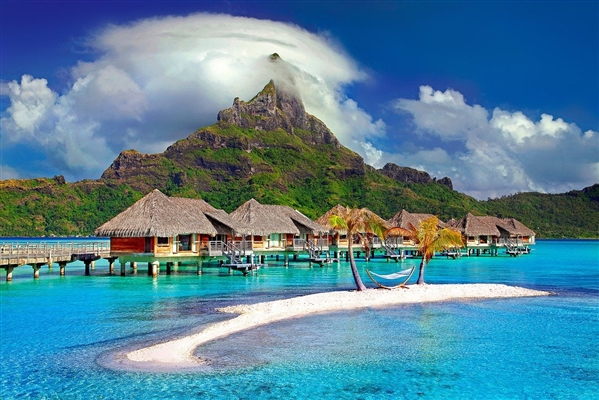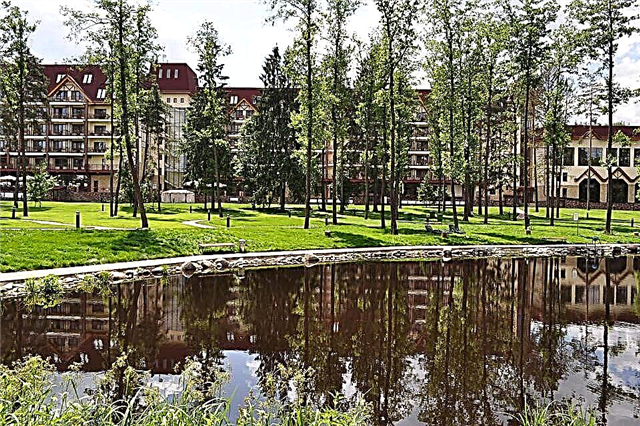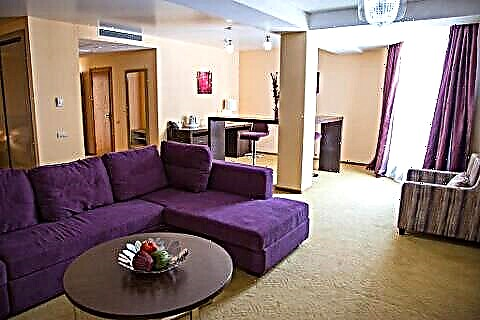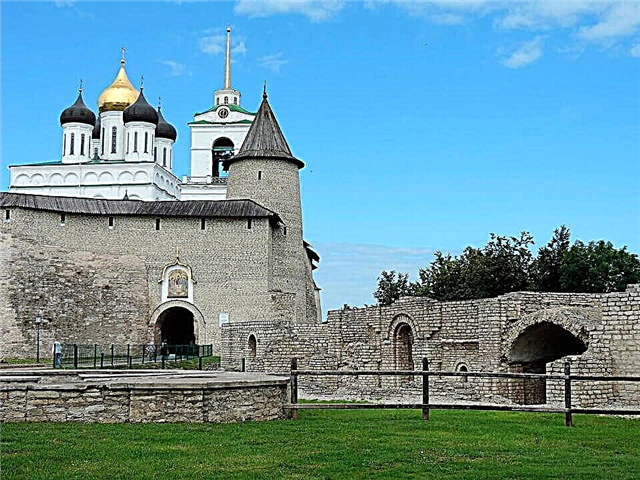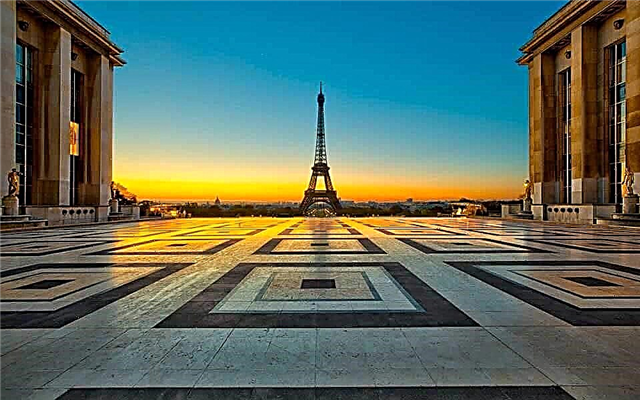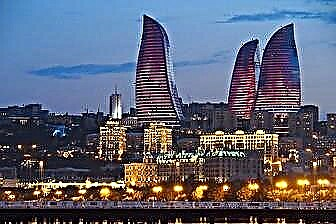Azerbaijan is a bright colorful country where European and Asian cultures are closely intertwined. It is a modern prosperous state that cherishes its values and history. There are hundreds of historical sights throughout the country: fortresses and palaces, ancient cities and mosques that have survived from the times of powerful Persia. Azerbaijani resorts on the coast of the Caspian Sea are excellent health resorts where you can improve your health, fully relax and sunbathe on comfortable beaches.
Lovers of picturesque landscapes are attracted to the country by the natural beauty of Azerbaijan. Here the peaks of the Greater and Lesser Caucasian Ranges pierce the sky, mud volcanoes beat out from under the ground in the Gobustan Reserve, the Goygel Lake sparkles with a mirror-like surface. Nine of the 11 climatic zones of the planet are represented in Azerbaijan - from subtropics, where banana palms grow, to high-mountainous zones with a sharply continental climate.
The best time to travel to Azerbaijan is from April to October. In spring, nature blooms with bright colors, from May the water in the Caspian Sea warms up to a comfortable temperature, the beginning of autumn is the best time for excursions and hikes. In the country, tourists find themselves in a real fruit paradise. Here you can eat plenty of delicious pomegranates, apricots, sweet grapes and watermelons.

The best hotels and hotels at affordable prices.
from 500 rubles / day
What to see in Azerbaijan?
The most interesting and beautiful places, photos and a short description.
Flame Towers
It is a modern architectural complex, a symbol of a new and prosperous Azerbaijan. The buildings are huge glass skyscrapers in the form of tongues of flame directed towards the sky. In the evening, the facade lights up to simulate a blazing fire. Flame towers are visible from almost anywhere in Baku, guests of the capital are delighted with the contemplation of the play of colors on the glass surface of the towers.

Gobustan reserve
An area protected by UNESCO and included in the World Heritage List. Here are the famous mud volcanoes, erupting from the ground, mixed with oil and water. And also rock paintings, preserved from the prehistoric era, demonstrating the beliefs and daily life of primitive people. At the foot of Mount Boyukdash, there are inscriptions of Roman legionnaires who visited here in the 1st century.

Maiden Tower in Baku
A mysterious structure on the territory of the ancient Baku fortress Icheri Sheher. The tower is considered a symbol of the city and a unique object, as it is an example of Azerbaijani architecture that has no analogues in the region. There is a version that initially an ancient Zoroastrian temple was located on its territory, where the sun and fire were worshiped.

The old town of Icheri Sheher
The oldest residential quarter of Baku, which is surrounded by well-preserved fortress walls. People have lived on this territory since the Bronze Age. Even now, people live in houses, many of which are hundreds and thousands of years old. In the middle of the stone streets of Icheri Sheher, time seems to have stopped its course - here you can fully experience the atmosphere and color of the country.

Palace of the Shirvanshahs
It is a palace ensemble of the 15th century, where the rulers of Shirvan lived. In the construction of most of the buildings, Apsheron limestone was used, which over time acquired a beautiful golden-nut hue. On the territory of the complex there is the royal tomb, the palace mosque, the Divan-khane courtyard, the mausoleum of the scientist Seyid Yahya Bakuvi.

Sheki khans' palace
A beautiful two-storey building with rich interior and exterior decoration. In the 18th century it was built as the residence of Huseyn Khan Mushtad. The façade of the palace adorns magnificently executed scenes of hunting and war, framed by intricate floral and geometric ornaments. Stained-glass windows, consisting of several thousand pieces of glass, are decorated with openwork grids made of stone.

Caravanserai in Sheki
An inn located on one of the sections of the Great Silk Road. A place of stopping and resting for merchants, slave-owners, messengers, travelers who have lingered here for centuries to gain strength for their further journey. Now part of the caravanserai is given over to the hotel, and in the other part there is a museum. The walls of the structure were built of solid and thick stone, the large arched gates, which served as an entrance, were tightly closed in case of danger and provided shelter to the people inside.

Gandzasar monastery
Armenian Christian monastery in Nagorno-Karabakh. It got its name from Mount Gandzasar. On the territory of the monastery, tourists note a special atmosphere, as if isolation from the surrounding reality. It is a quiet, peaceful place with ancient architecture, mysterious writing and strange drawings on the walls. Here are the tombs of the rulers of the Khachen principality and bishops.

Bibi-Heybat Mosque
A significant monument of Islamic architecture on the shores of the Baku Bay. The mosque was built in the 13th century. Prospering and developing, it existed for the 7th century, and in 1936 it was blown up by order of the Soviet functionaries who came to power. In 1994, Heydar Aliyev issued a decree on the restoration of the mosque in its former place. The new building was built until 2008, as they tried to repeat the shapes and outlines of the old mosque, to recreate the interior from photographs.

Mosque Tezepir
Baku mosque, built at the beginning of the 20th century. It escaped the fate of being destroyed under the Soviet regime, functioned for a long time as a warehouse and barn, but after 1943 it again became a mosque. Gold was used in the decoration of the building, internal patterns and inscriptions were made in the style of the school of Azerbaijani painting. The domes of the temple are made of marble.

Indian temple of fire worshipers Ateshgah
A rather exotic attraction for Azerbaijan. The temple was erected in the 18th century by the forces of the Hindu community, whose representatives called themselves Sikhs. The building was built on the site of an ancient Zoroastrian sanctuary, where fire was worshiped and mystical rituals were performed before the adoption of Islam. The last representatives of Zoroastrianism left for India, but their descendants returned through the centuries and erected a new sanctuary - the Ateshgah Temple of Fire Worshipers.

Mukhtarov Palace
The building is in the Venetian style, erected at the expense of the oil industrialist and millionaire of the early twentieth century Murtuza Mukhtarov. After a wedding trip to Europe, his wife was deeply impressed by European architecture, especially the flying Venetian palazzo. Mukhtarov decided to build a palace in the European style for his beloved wife, for which he hired the architect Ploshko.

Azerbaijan Carpet Museum
The expositions of the museum are mainly devoted to the art of carpet weaving. Various schools and eras are represented, the collection contains many items of historical value. The oldest exhibit is a fragment of a carpet woven in the 17th century by representatives of the Ovchulug school. In addition to carpets, the museum contains collections of ceramics, bronze, gold and silver jewelry, and national costumes.

Heydar Aliyev Center
A modern futuristic building with museums, congress centers, offices and exhibition galleries demonstrating the achievements of Azerbaijani culture. The building received the World Design Award in 2014. The Heydar Aliyev Center was established in 2006 for the development of Azerbaijani culture, customs, traditions, language and history.

Caspian Sea resorts
The well-maintained coast of the Caspian Sea has a high-quality beach holiday. In Baku, Nabran, Khachmas, Lankaran, tourists will find everything they need for a comfortable vacation - hotels of almost all world chains, developed infrastructure, excellent cuisine, and a high level of service. The water in the Caspian Sea warms up to +20 in May, the swimming season lasts until October.


